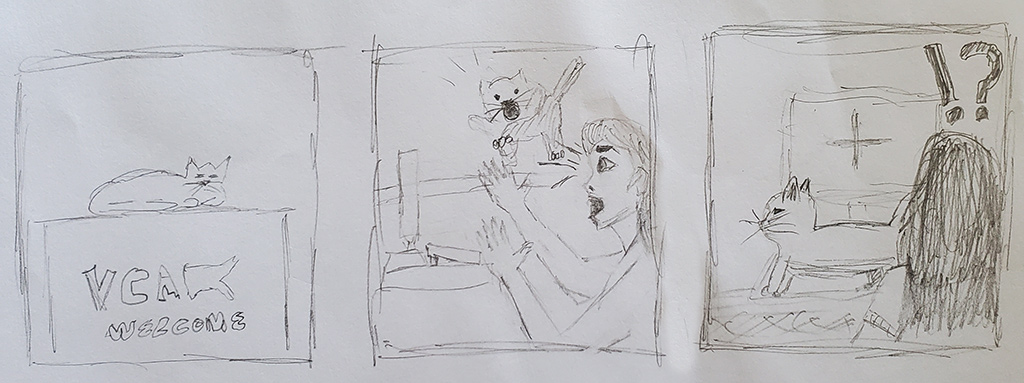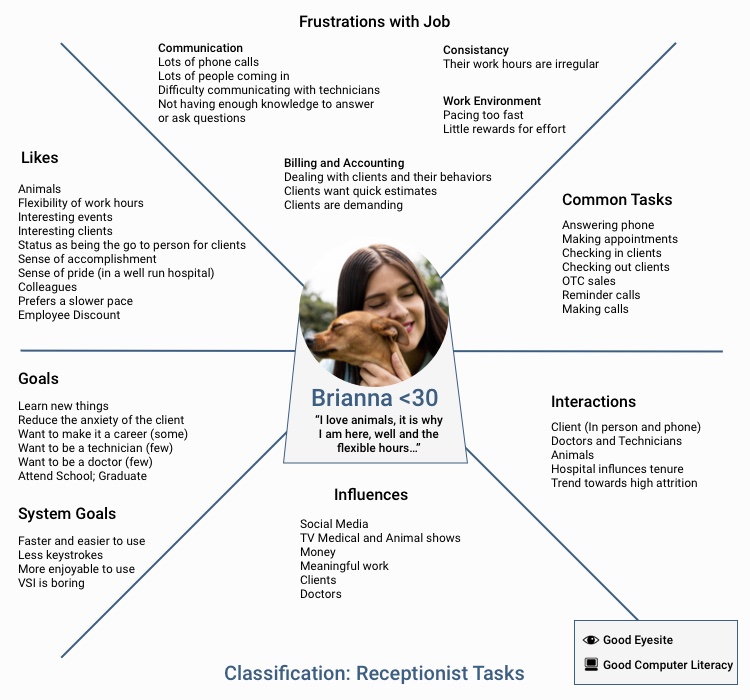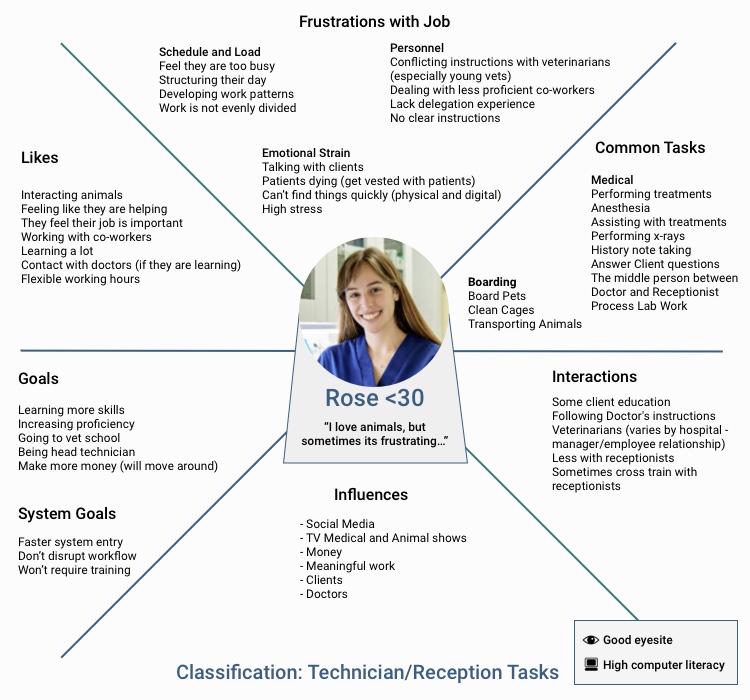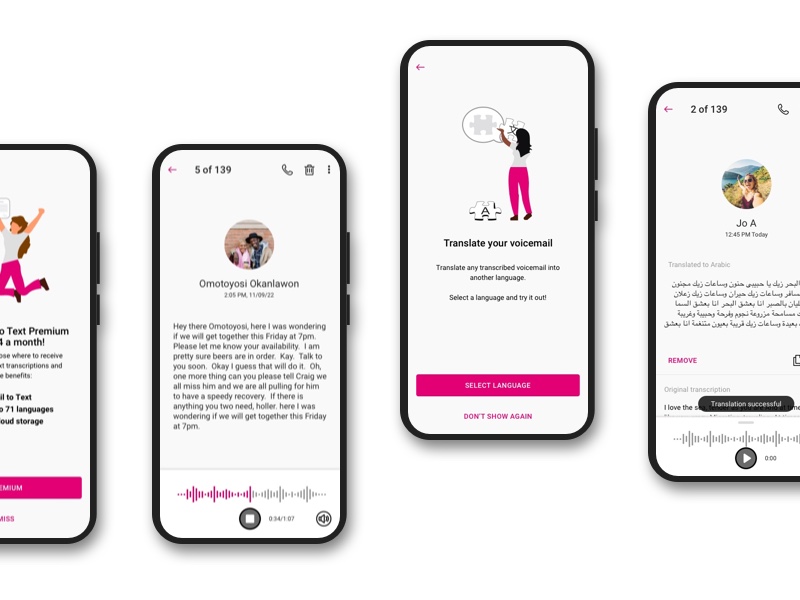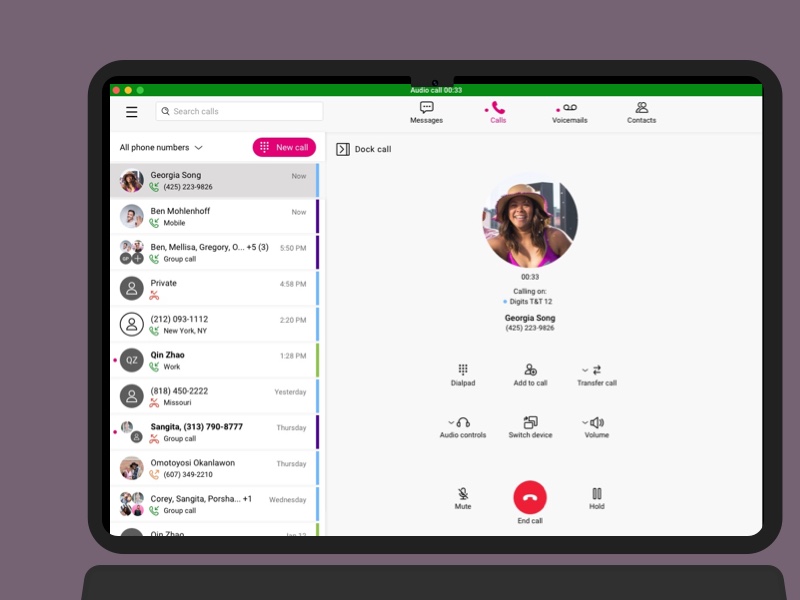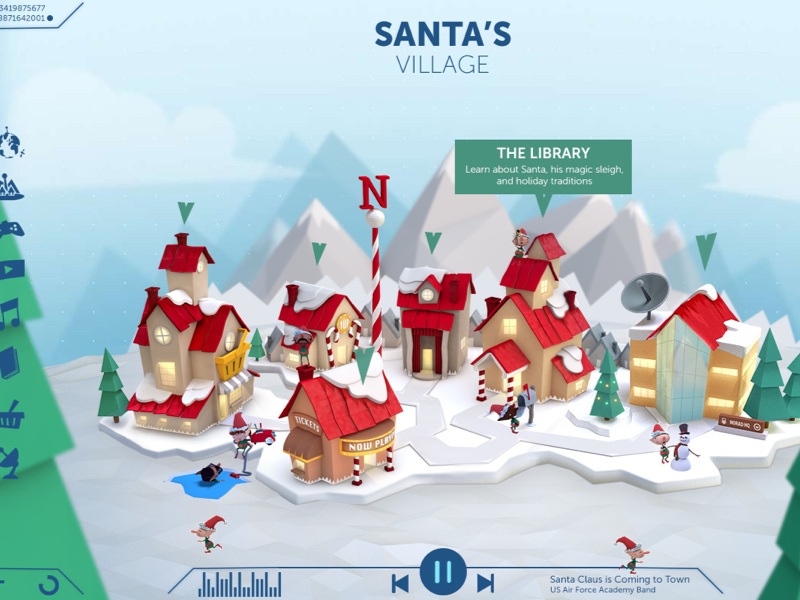Project Summary
What was asked?
VCA wanted to create a wholistic hospital operations application with a modern visual user interface and implement new line of business features to create the premiere patient care portal for their 400+ veterinary hospitals.
Love numbers? Skip to my Impact
What I did?
- Understand the pain points of the hospital staff as they provide patient care and support services
- Modernize the patient care portal to reduce training time and mitigate pain points
- Create a scalable design system that could accommodate new features and requirements
- Develop a UX process that could guide design and product best practices
- Earned promotion to User Experience Architect
Challenge
User Success
- Reduce discovery and learning curve
- Streamline workflow by reducing number of actions to complete a task
- Reduce mistakes in overbookings for boardings
Business Success
- Increase confidence with the UX process
- Reduce training and overhead costs
- License app to other Veterinarian hospitals
Approach
How Does a Veterinary Hospital Operate?
Observing and interviewing hospital staff on location to understand their duties and pain points across several different sized veterinarian hospitals.
Deep Dive on the research methodology
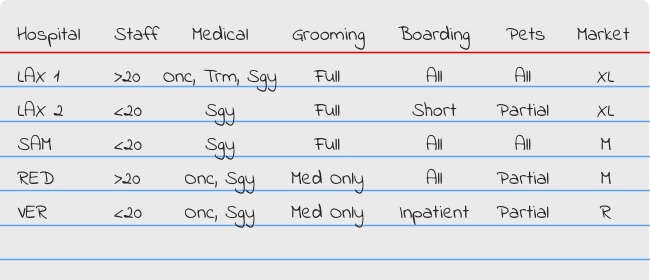
Patient Journey Map
Documenting pet owner touchpoints and how a patient (pet) moves through the hospital in a boarding scenario.
Two Types of Pet Owners
The Runaway:
This client is trying to beat traffic or possibly flee the country. They come in and want to hand off their pet as soon as possible. They may cut the line, may be aggressive or agitated, and may just abandon their pet without properly checking in.
The Melancholic:
This client has a hard time letting their pet go. They may ask a lot of questions, may give a long list of care instructions, and may require reassurance, extra attention, and might need a nudge out the door to get on.
Pet Journey Map
After the pet is greeted and checked in they are moved to where they will be boarded. The location of the pet is important throughout the stay.

Outlining the Boarding Problem Statement
Hospital staff finds the current system tedious and limiting in functionality based on their current job responsibilities in providing accurate boarding quotes, determining boarding capacity, and efficiently identifying and checking in boarders and tracking their personal belongings and care schedule.
Wireframing
Solving one of the main problems that of stakeholder confidence in the overall UX process. I utilized a form of Lean UX principles to rapid design and prototype possible design solutions on a whiteboard.
Early Boarding Iterations
Curious to see the methodology and problems I was attempting to solve in greater detail?
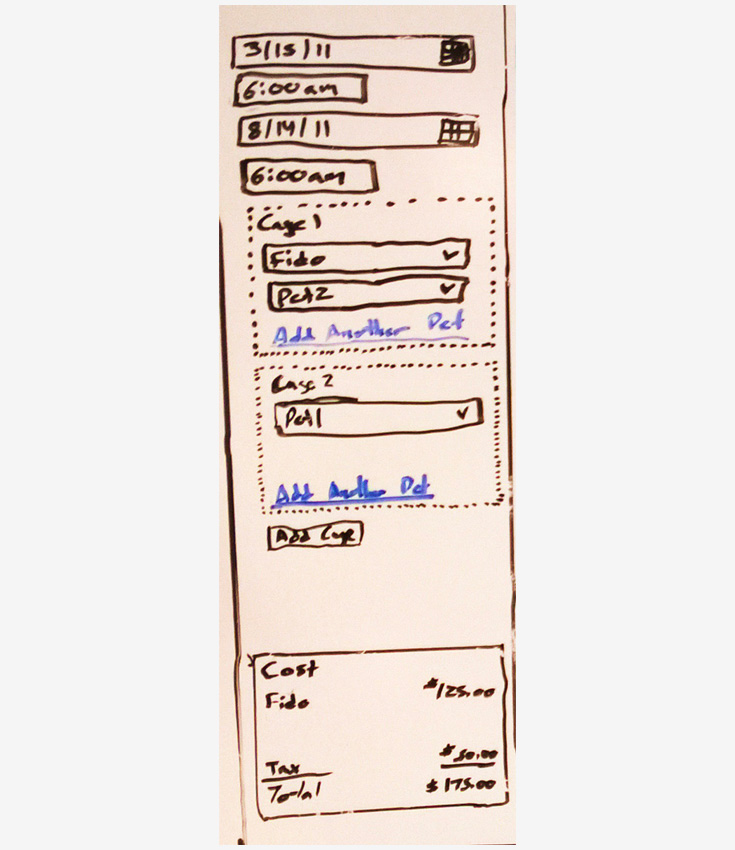
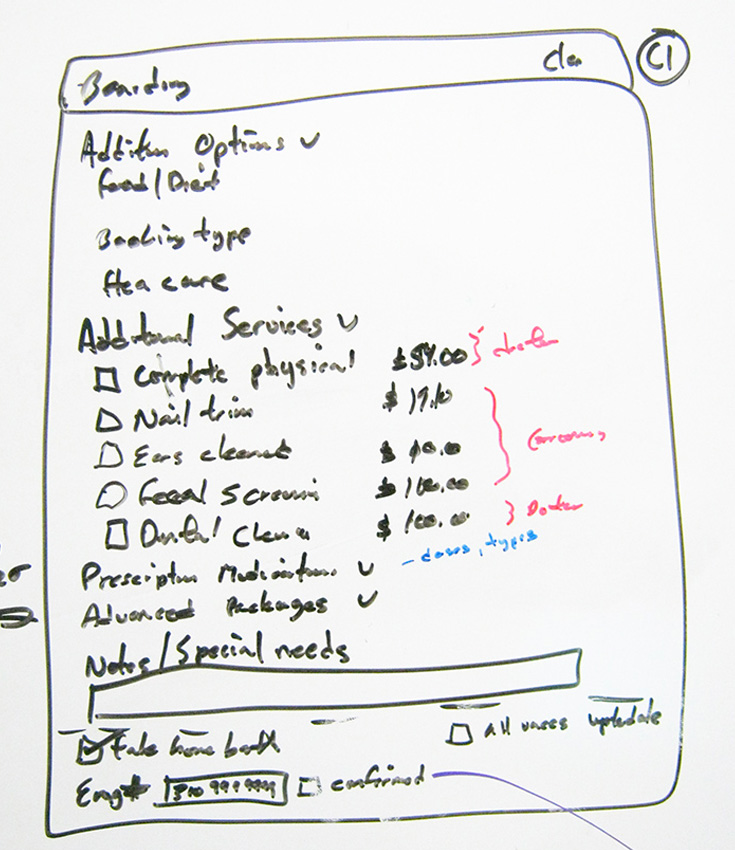
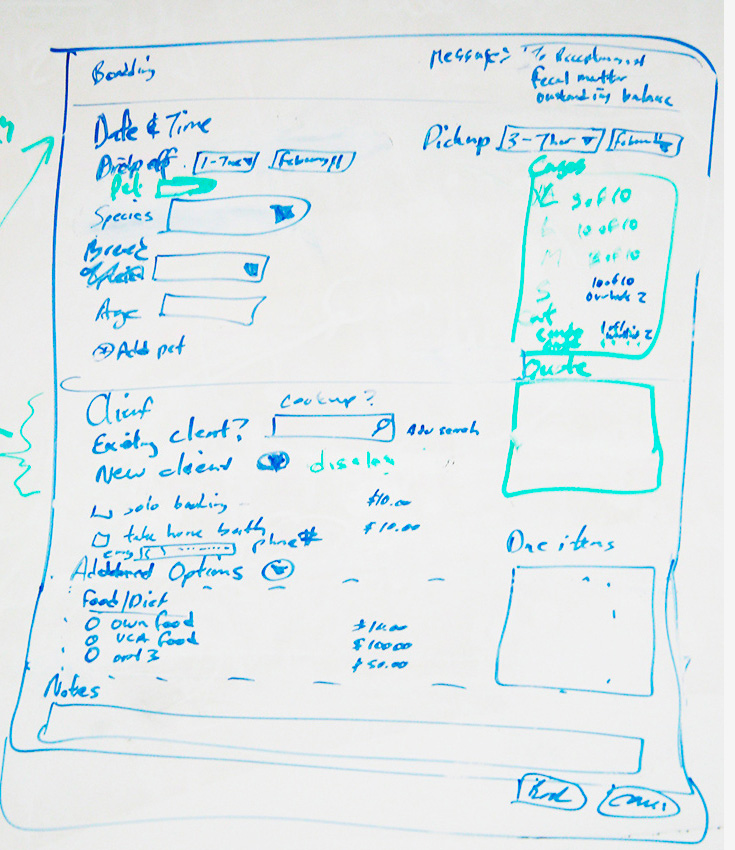
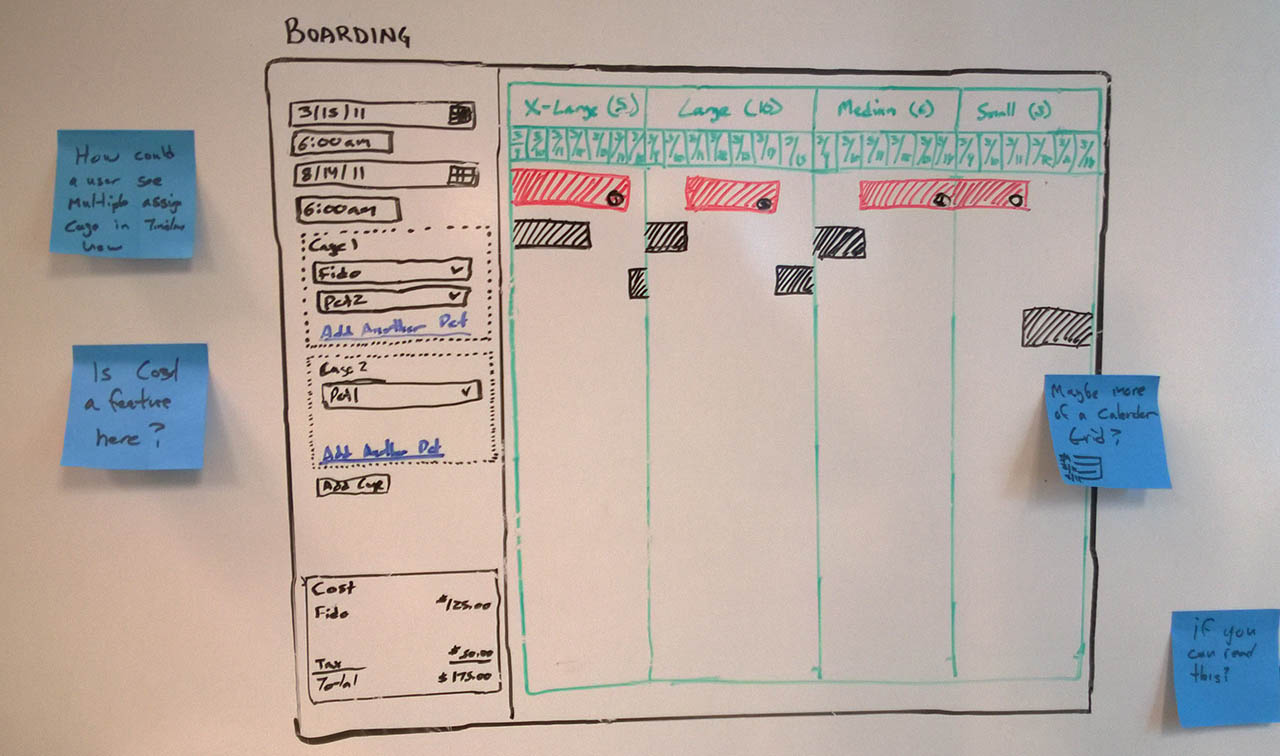
The rapid whiteboarding sketches in figures A1, B1, C1, D1 helped clarify a lot of questions and flesh out requirements rather quickly. An added benefit was any member fo the cross discipline team could walk by and look at the whiteboard and ask questions with a post-it or a marker.
The ability to execute on this from my experience across several different projects lies within the strength of the cross-discipline team, and how deeply stakeholders want to get into the design weeds.
Whiteboard to Prototype
Iterating on the design through usability testing with Brianna and Rose achieved the goals of reducing the learning curve and speed of getting the information they needed. Iterating on the missed opportunities like total cage capacity over a day/week/month at a glance and cage placement suggestions the user was able to accurately and quickly get a boarding price quote to a customer through fewer interactions.
Paul and his partner Karina want to get away for the weekend, so they call VCA to price shop on boarding 2 of their 3 pets. Brianna queries Woofware to determine the availability and the price for the two pets and inquires if they are existing clients. Paul and Karina agree to book the boarding.

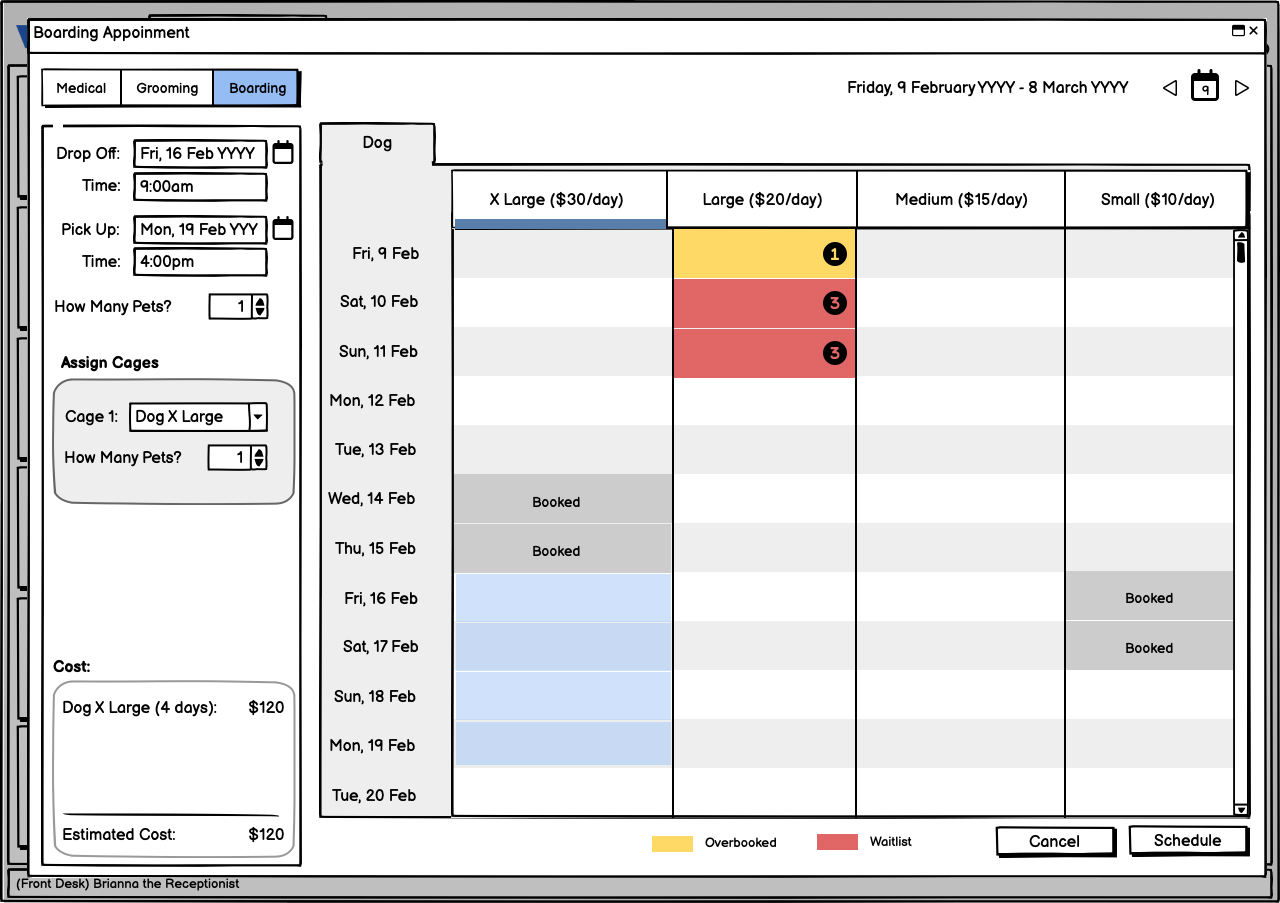
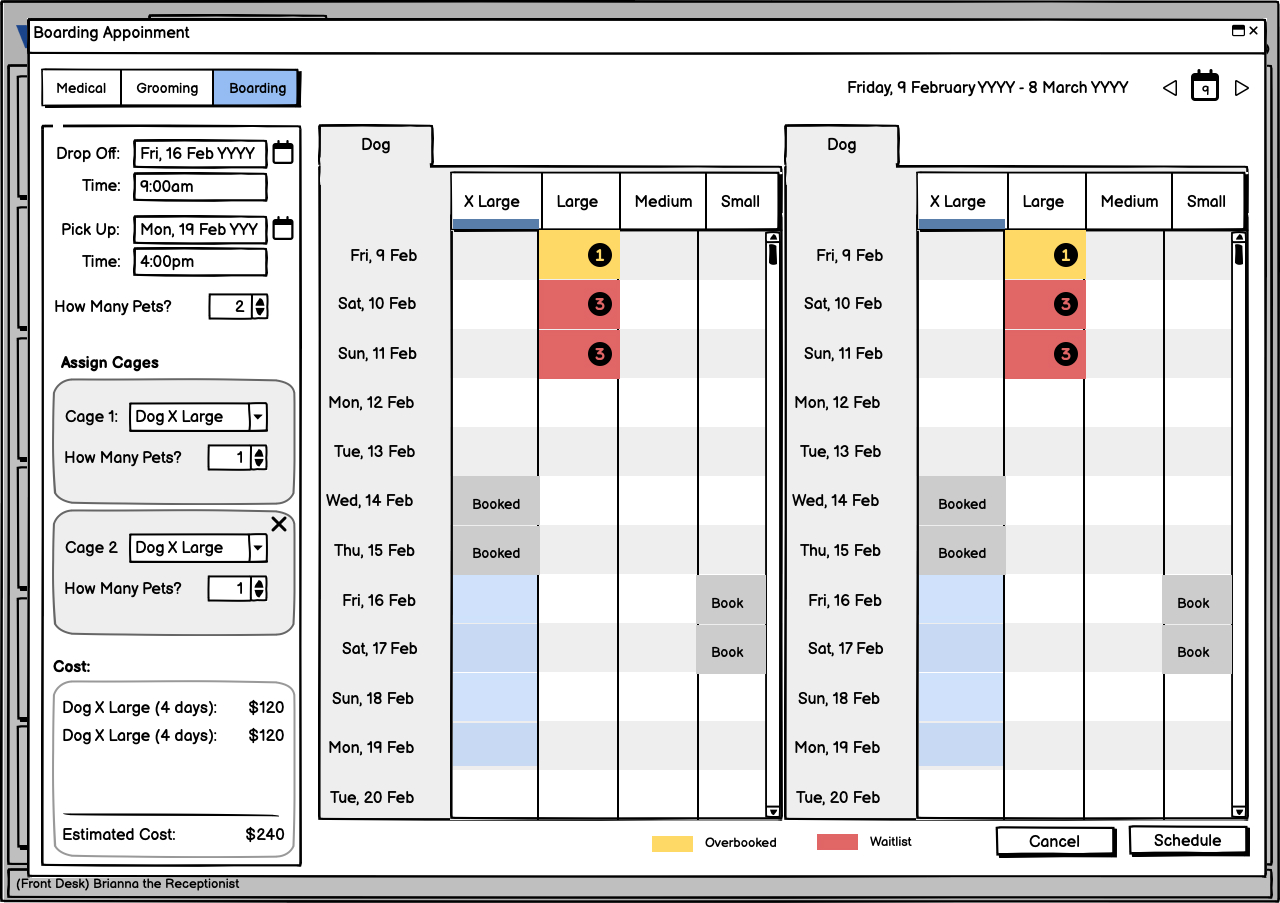
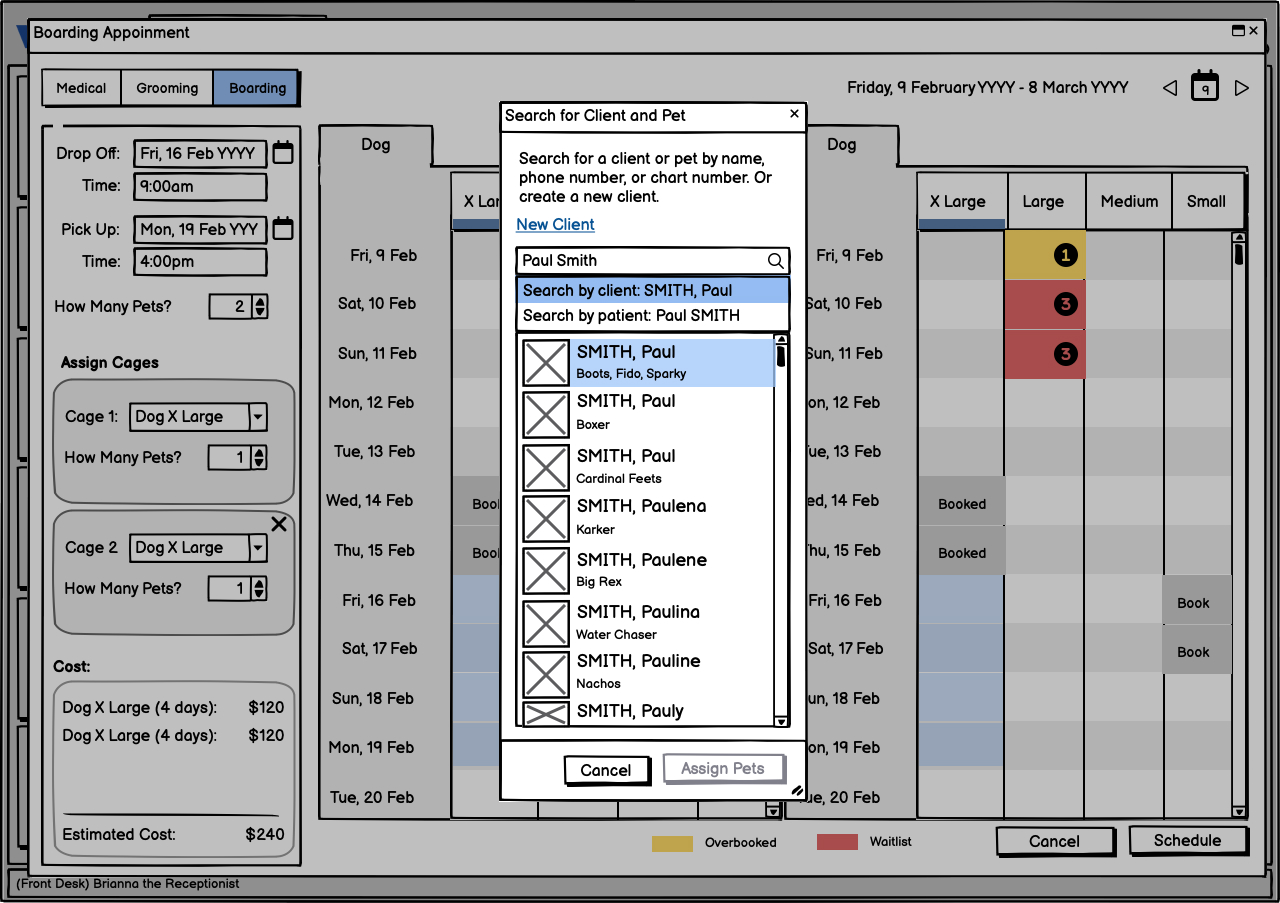
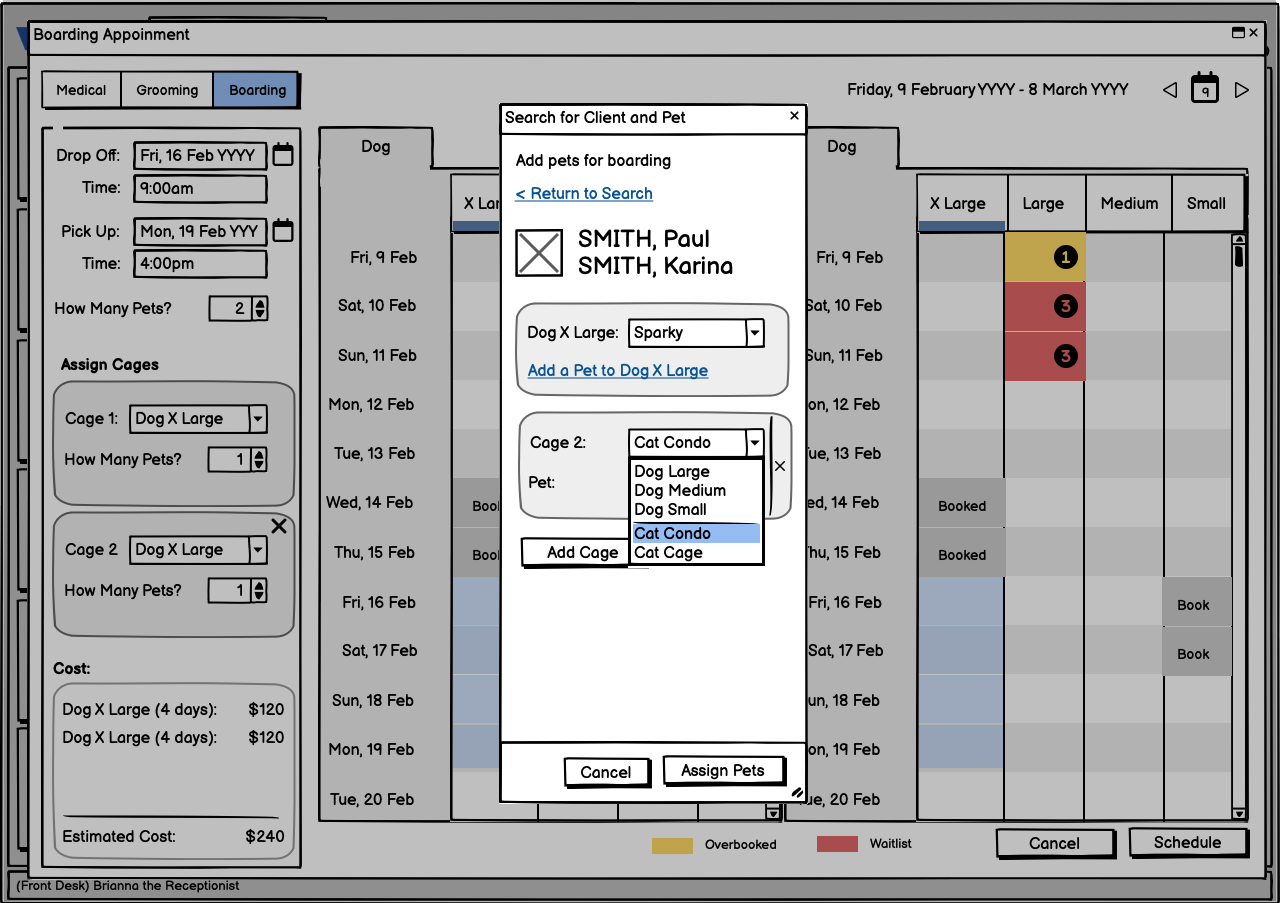
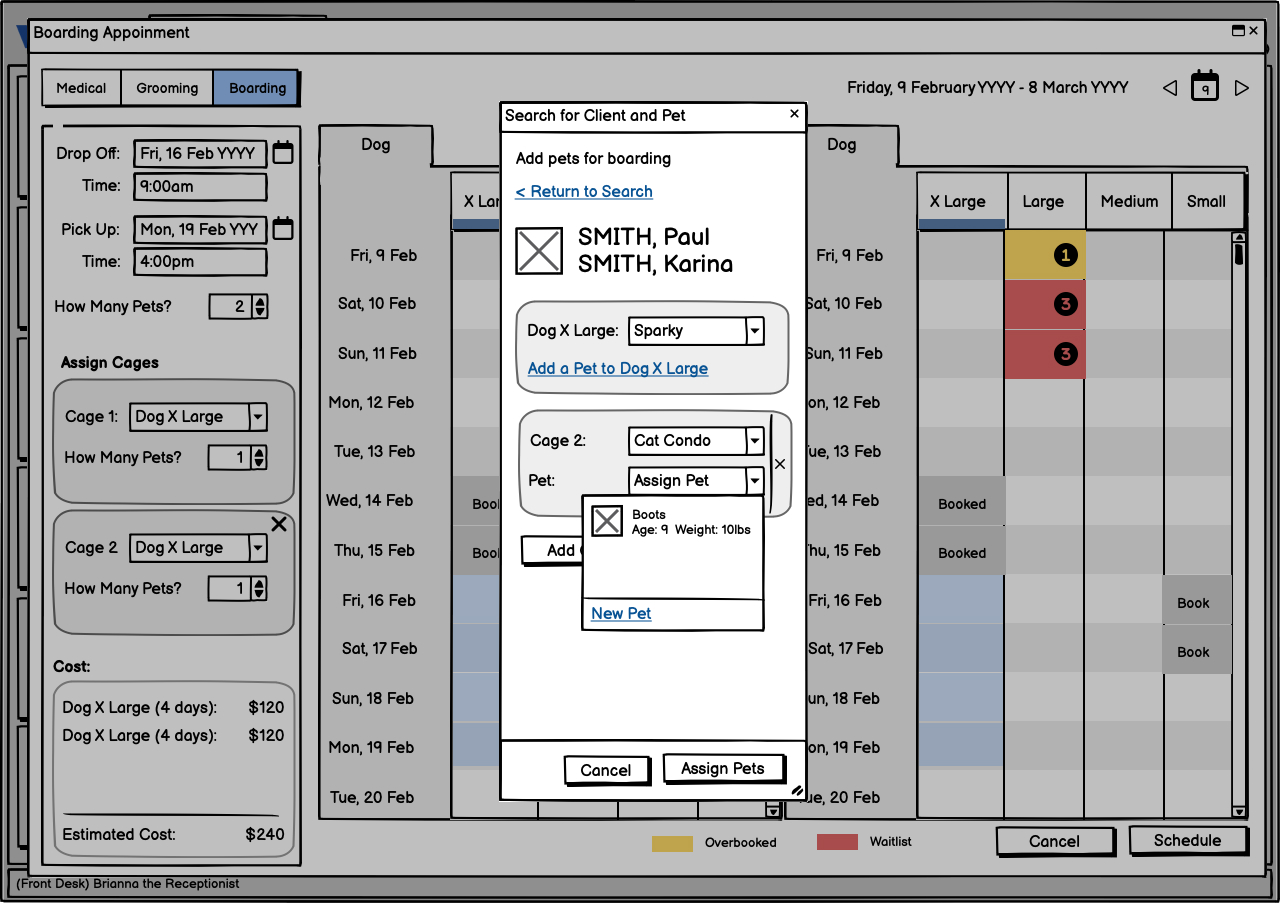
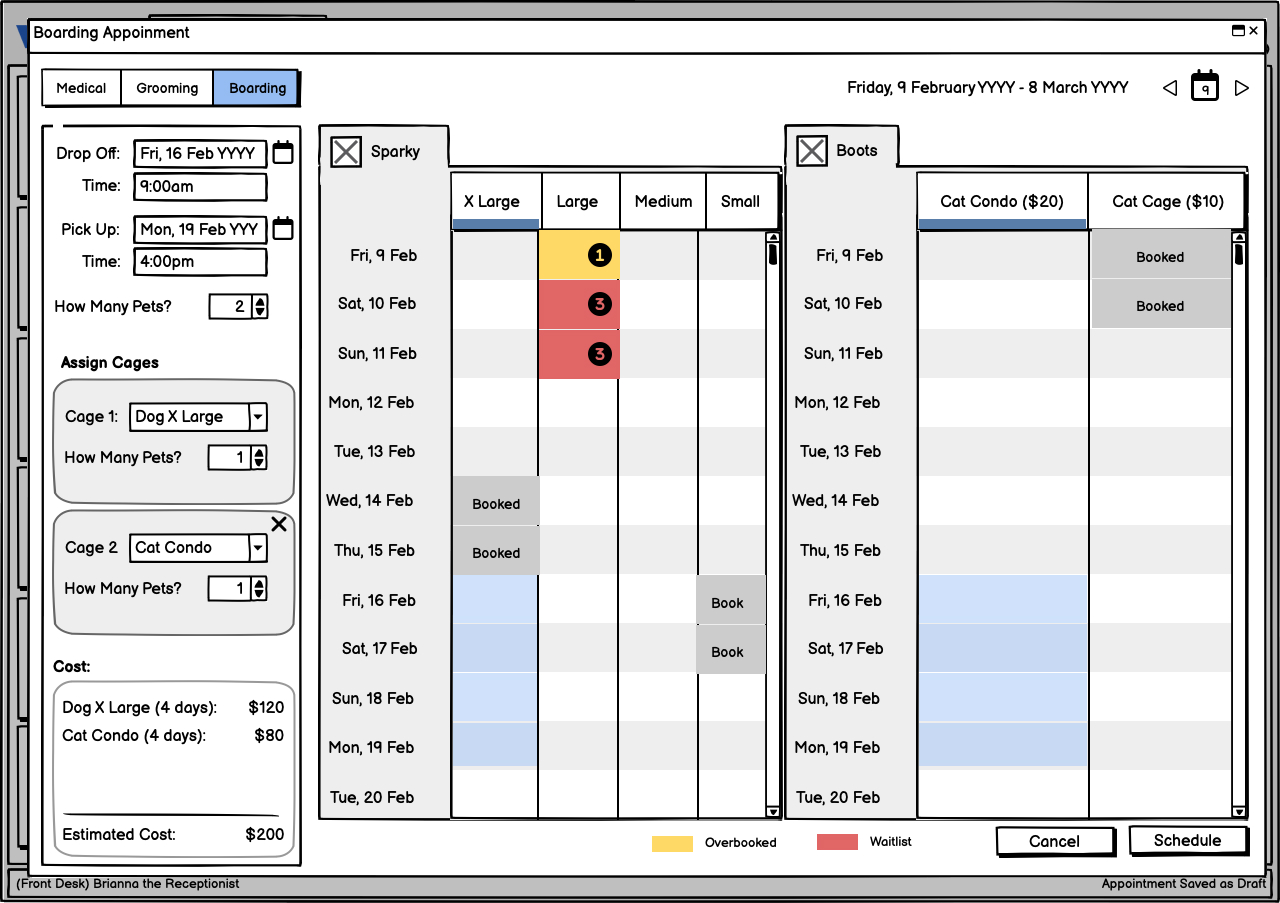

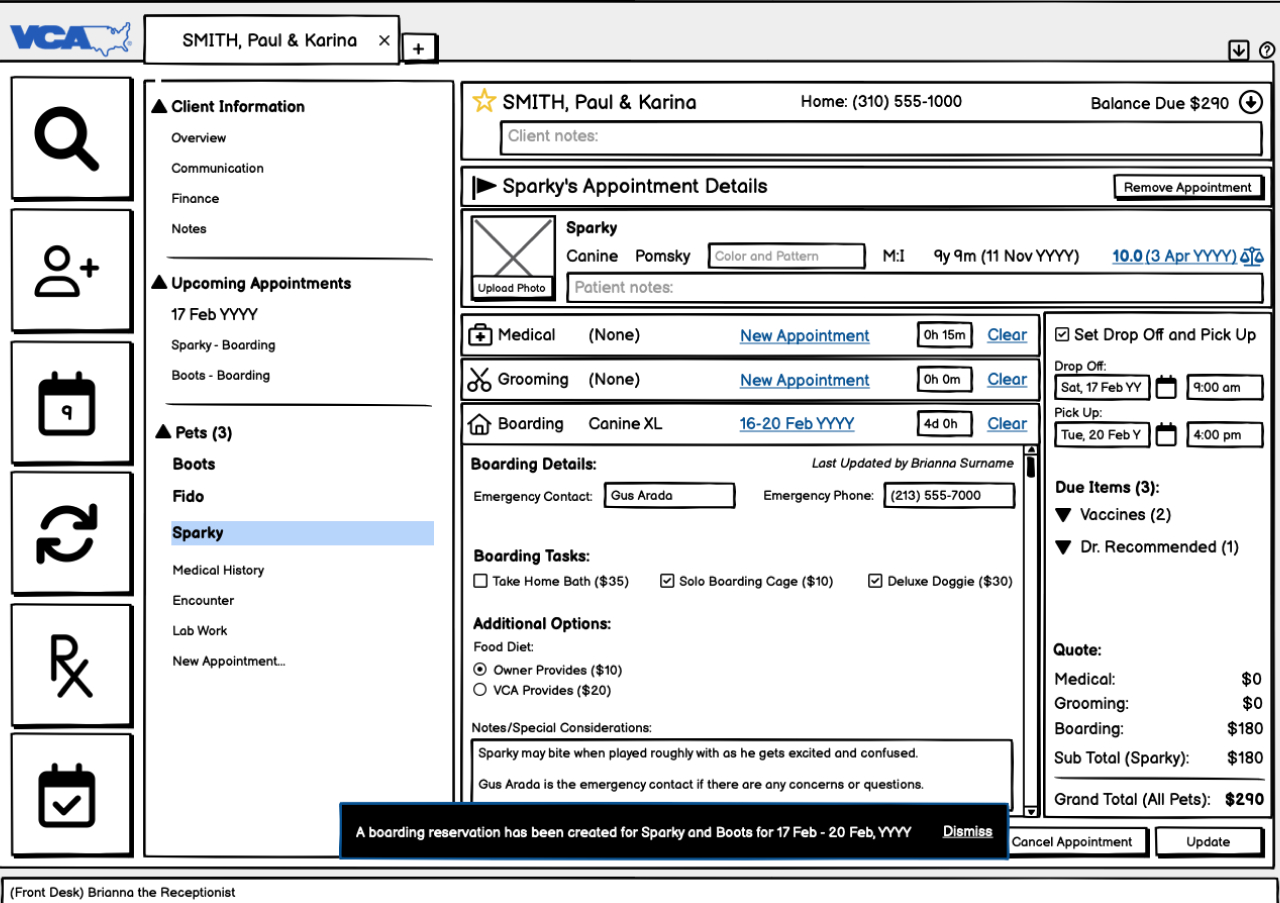
Bringing It All Together
Tasked Based Storytelling Through Protoyping
To test the design solution with users and for stakeholder review; I used Balsamiq as the defacto prototyping tool. The video incoporates further iteration and demonstrates one way Brianna could use Woofware to accomplish the task outlined in the following scenario.
Download a Transcript of the Screen Names and Steps
Impact
Design Process Summation
With the delivery successes and increased client confidence I was able to reduce the need to travel to the client site from four days a week to once every two weeks.
Results
Woofware Phase 1 was released into five hospitals on schedule as a three-month Beta test to measure how well we accomplished our goals in the complexity of real life situations. It was then rolled out into the 400 hospitals. In the middle of the Beta, I earned a second promotion to become the UX Practice Manager for iLink Digital Inc. and ceased having direct day to day individual contributor responsibilities with VCA and Woofware.
75% reduction in training and onboarding time
37% increase on average in checkin time
40% increase in accuracy of boarding price quoting and manangement
52% increase in medical record accuracy over the previous digital and paper system
Given the project's initial success VCA continued to engage with us on futher collaboration. I hired three more designers to expand on the feature offerings of the desktop app that included an Electronic Medical Records (EMR) system and a mobile/tablet companion app for medical technicians and veterinarians.
To respect confidentiality, final Hi-Fi assets and the actual metric values have been omitted.

